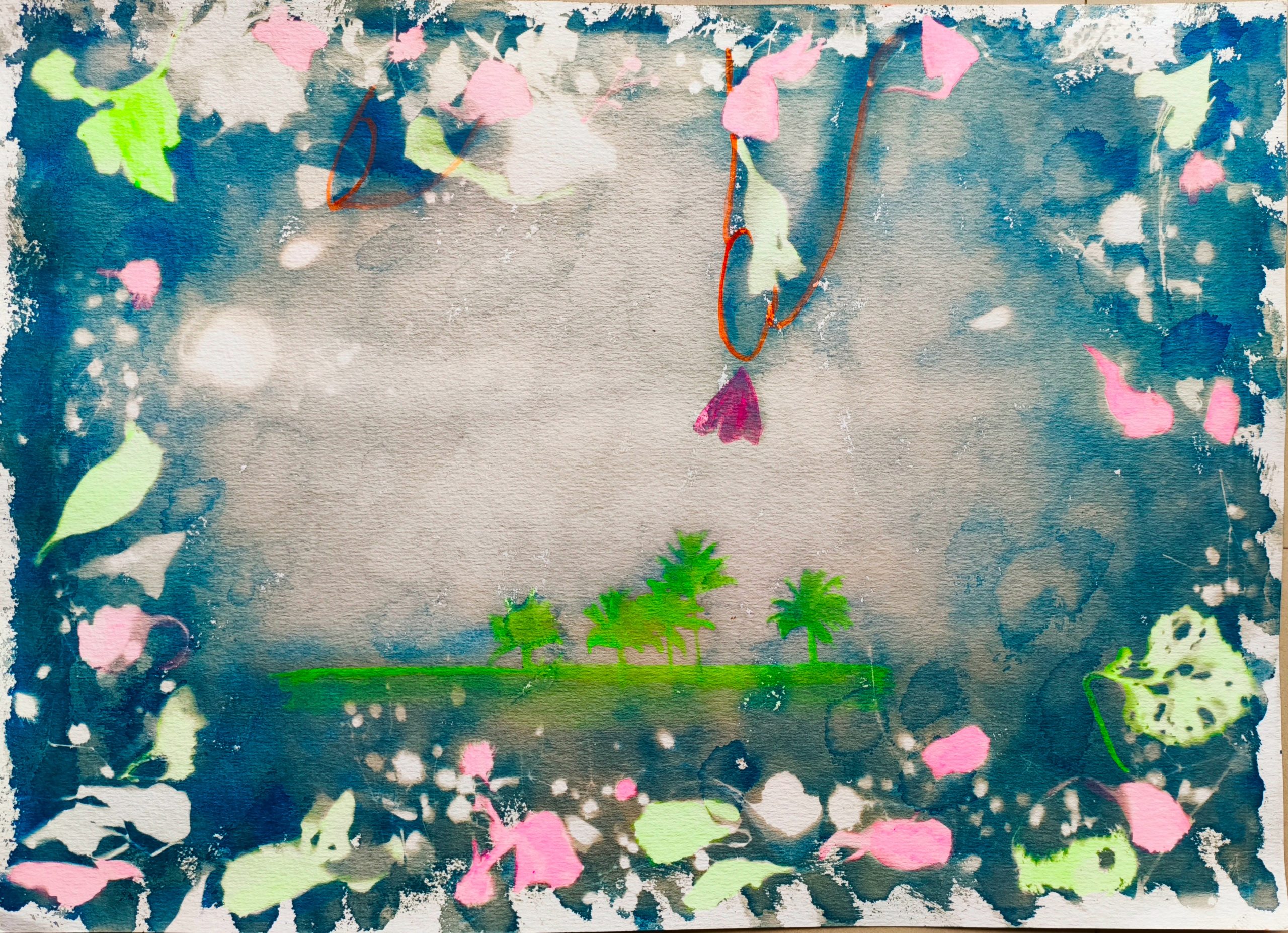
Cyanotype is an alternative process that was invented in 1842 by John Herschel. The photographs, which appear like ‘blue prints’ have continued hold the interest of photographers over the decades since its invention. While the number of such practitioners is not particular large, today, the art photography scene is filled with them. Exhibitions have been opening their doors to alternative practices, with cyanotype being at the forefront amount others. But why is there such a sudden interested in a yesteryear process? Here’s a look.
For the uninitiated, cyanotype is cameraless photography. In other words, it is entirely done without the need of device. To create a prussian blue print, one required light sensitive mixture of ferric ammonium citrate and potassium ferricyanide, which is applied on a thick paper. One can use negatives or objects on this coated paper, which is then exposed to light. In the end, what you get is a positive photograph (if you have used a negative of your photograph) or a silhouette of the object that you used.
So, why is the process resonating with people today. One of the reason is the revival of analogue prictices and the desire to make photography more tactile. Digital photography has hit a plateau, whether one believe it or not. While camera brands are selling their devices with ease, there are groups of people who are not satisfied with photographs these device produce. It has nothing to do with the device, but rather how the photographers are tired of seeing crisp, clinical pictures everywhere they look. This is also the reason why compact camera with CCD sensors are making a return, and the other format to follow are cyanotypes.
In addition, there is also the factor of accessibility and the DIY appeal. Making a cyanotype is not a time consuming task. And the materials can be found easily across the world. Even if you are a noob, you can look up YouTube videos and create a print in the comfort of yoru home. In fact, Amazon sells kits for this process, which are easy to procure and do not cost a lot.

The process is also experimental and playful. One can create cyanotypes like Anna Atkins or create a painting using the process. For the latter, you can dip your brush in the light sensitive mixture and draw on a blank piece eof paper. Expose it to light and boom, you get a painting. You can also use other forms of art such are stitching or water color paint to add more depth to your images. For instance, I used neon water colors, which when exposed to the UV light (a main component in the making of the print), brings the photography to life.
Last but not least is that it allows you distinctiveness, nostalgia, unpredictability, a sense of individuals. You can make a cyanotype on a paper, and you can make a tote bag or a dress out of it. Some can make earrings or even mugs. The end result can be different from what you imagined, as each cyanotype can be altered due to the environment you are in.
For anyone who feels stuck in their creative practice, they can always turn to alternative photography, and create images with a whole new set of rules. Each image is distinct, even if you use the same objects. This is what makes the process so important today,e specially when every digital image on social meida looks the same. The sky, in the end, is truly the limit.
The revival of cyanotypes only showcases the desire for authenticity in a digital world. It is also a call for a sense of community and creative control. With AI images flooding everywhere, a cyanotype is a breath of fresh air, with just a handful of material.

